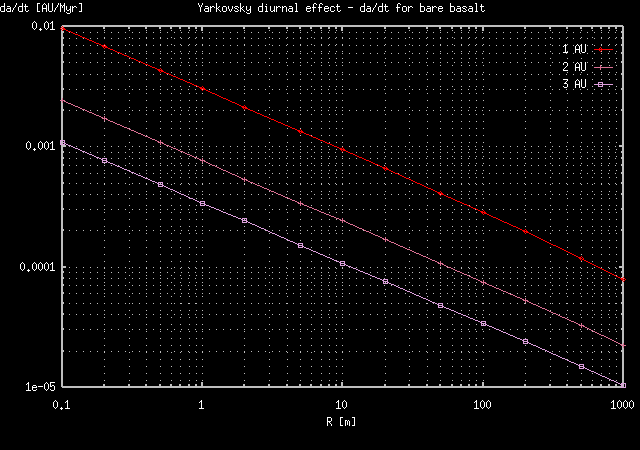 |
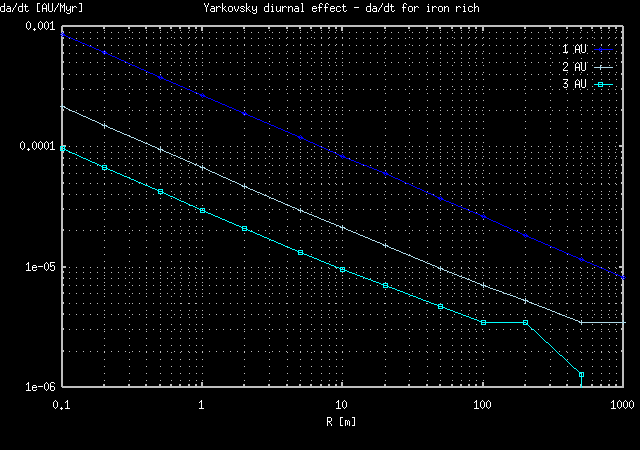 |
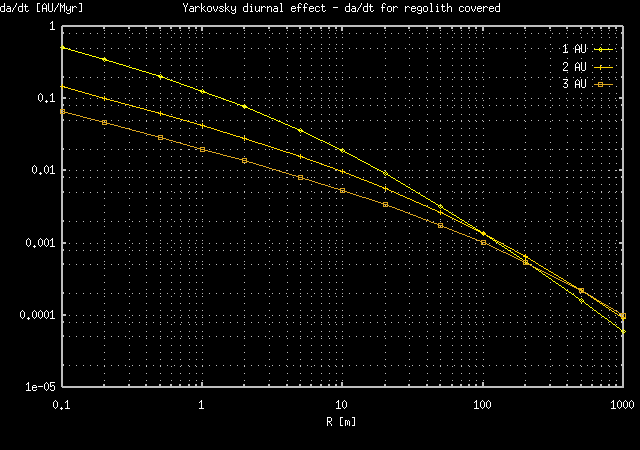 |
We present the results of numerical integrations of motion of an asteroid due to solar graviation and Yarkovsky diurnal effect. Thermal properties of different types of materials come in Table 1.
| type of material -> | bare basalt | iron rich | regolith covered |
| bulk density rho [kg · m-3] | 3500 | 8000 | 3500 |
| surface density rhos [kg · m-3] | 3500 | 8000 | 1500 |
| thermal conductivity K [W · kg-1 · K-1] | 2.65 | 40 | 0.0015 |
| specific heat C [J · kg-1 · K-1] | 680 | 500 | 680 |
Other relevant physical properties common for all three types are surface albedo A = 0, surface infrared emissivity epsilon = 1, obliquity dzeta = 0°. Radii of fragments vary from 0.1 m upto 1 km. You could see a summary of all linear drift rates da/dt, de/dt, di/dt in Table 2.
Integration time was 0.1 Myr, integration step 36.525 day using SWIFT_RMVSY program.
 |
 |
 |
Three graphs show drifts of semimajor axis for three types of fragments and three different initial semimajor axes: 1 AU, 2 AU and 3 AU. All other orbital elements are zeros. Compare these results with seasonal drift rates
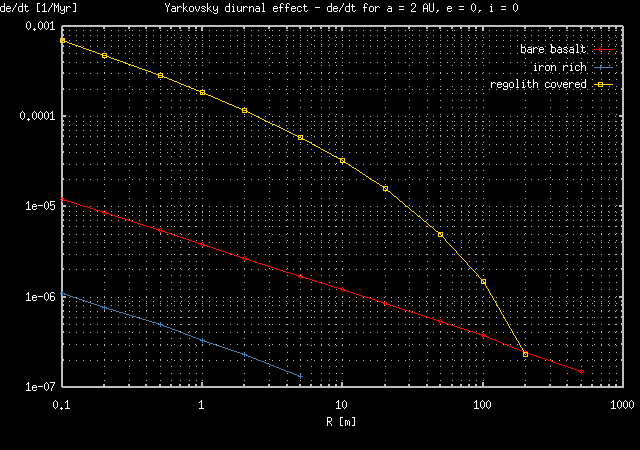
Very little eccentricity increase could be seen in the de/dt(R) graph for the regolith covered bodies. Consequently this effect could be important only for orbits with low semimajor axes (not in the main belt) and only on long timescales in order of 100 Myr. In general, diurnal variant of Yarkovsky effect is most effective for bodies with low thermal conductivty.
Inclination does not show any variations on timescale 0.1 Myr. See next section for inclined orbits.
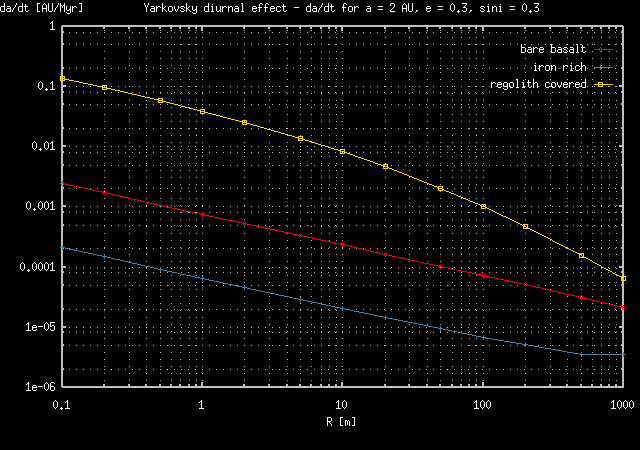 |
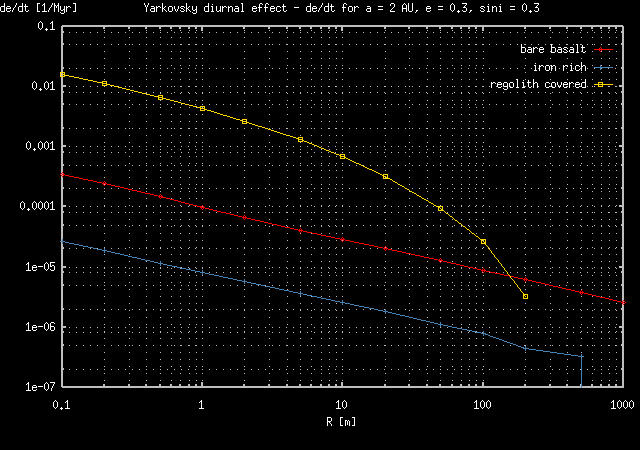 |
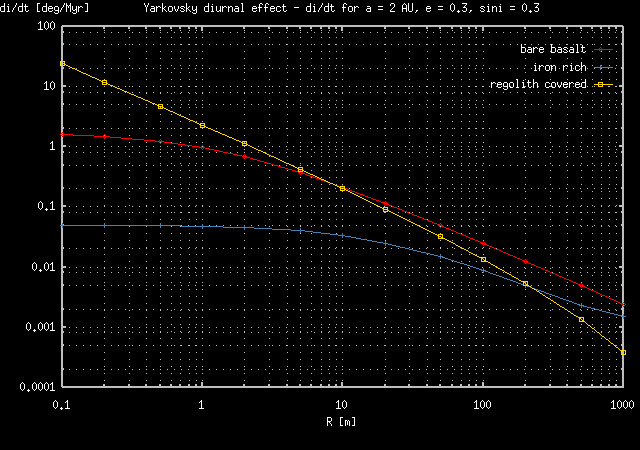 |
The most interesting features, which are visible in values of rates are that da/dt has not changed a lot, because eccentricty increase is balanced by the change of inclination and consequently obliquity of spin axis. The eccentricity changes are 10 or even more times greater than for circular orbits. The rate for bodies larger than 100 m in diameter is greater for base basalt ones.
Inclination rates di/dt has changed dramatically - now they seem to be very important, e. g. in surroundigs of nu_6 secular resonance, which is dependent strongly on inclination. However these high rates will be supressed by perturbations coming from planets (through precession of nodes) and precession of spin axis itself.